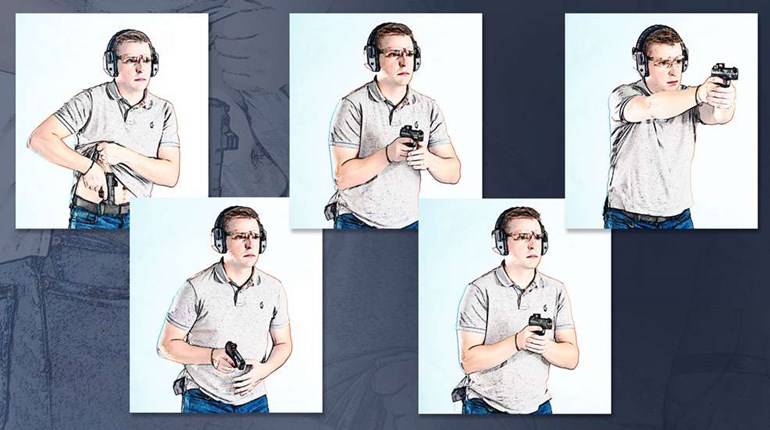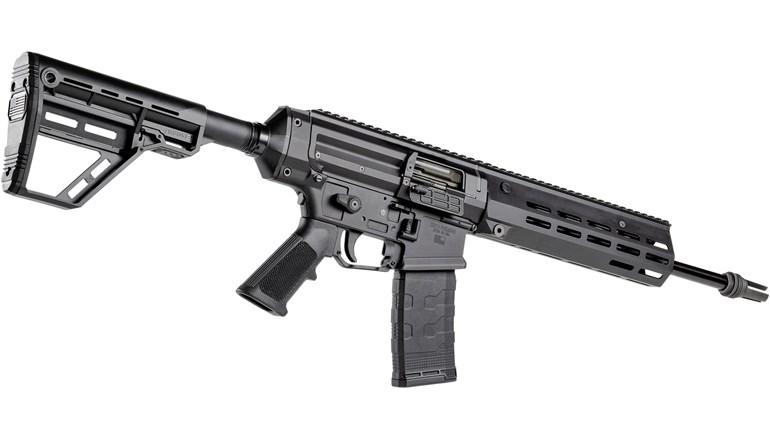
Ruger’s PC Carbine is just one of the many options available for those who choose the PCC lifestyle. Accepting Glock magazines and with a variety of options for attaching accessories, the PC Carbine makes a lot of sense for defense.
Students of firearm history know the concept of pistol-caliber carbines is not a new one. They really first became a hot item back in 1873, when Winchester introduced the Model 1873 carbine and rifle. Coincidentally, that is the same year Colt unveiled the Single Action Army revolver. In short order, Winchester offered the Model 73 in .44-40 WCF, .38-40 WCF and .32-20 WCF chamberings. Colt responded by chambering its big revolver in the same calibers.
Surprisingly, in those days the Winchester was not chambered in .45 Colt; that only occurred in more modern times. Marlin and other companies soon got on the bandwagon, too, offering carbines that were compatible with Colt, Smith & Wesson and Remington revolvers.
Gun toters of the American West quickly saw the value of these carbines. They especially liked the idea of having a carbine and revolver chambered for the same cartridge. In the middle of an Indian attack or a dispute with outlaws or rustlers, it was a relief to know that the rifle or handgun could be loaded with any cartridge in the gun belt, without confusion or mistake.
Today, the lever-action carbine is still quite popular, as witnessed by the number of companies that market such guns. And they are chambered in most of the popular revolver cartridges, .357 Mag., .44 Mag. and .45 Colt, to name a few. They are flat, easy to carry and relatively simple to learn to load and shoot.
As a Texas peace officer, I often carried a Marlin Model 1894, chambered in .44 Mag., and, later on, a Browning Model 92 (now discontinued) also in .44 Mag. Among other custom features, I had the barrels cut to 16 inches, to make them easier to handle while getting in and out of a squad car. Even with the short barrels and magazine tubes, these .44s held nine rounds. Just the sight of these business-like lever guns stopped a lot of fights before they even started.
But, that is just the beginning of the story for these handy carbines. Today, we are blessed with quite a number of semi-automatic carbines chambered for popular pistol calibers. Scanning the pages of the “Gun Digest Annual,” one will find semi-autos chambered for 9 mm, 10 mm and .45 ACP. In addition, many of these guns use magazines compatible with the popular auto pistols. A person cannot only carry a carbine and pistol chambered for the same cartridge, but use one make of magazine for both guns. That’s what I call handy.
Lever-action or semi-automatic, these carbines are relatively short, easy to handle and lightweight. This is a particular advantage when one is chosen for a home-defense gun. They can be equipped with whatever optics the shooter prefers. And, they should have a sling attached for those times when the homeowner needs to have his hands free. An attached light is a good idea, too.
When a number of different family members might be using the gun, it’s a good idea to give some thought to caliber selection. When smaller family members are involved, it might be best to choose calibers that offer the least amount of recoil. It is also an excellent idea to make sure that the gun’s stock fits the smallest family member who will be using it. We can all get along with a short stock much better than with one that is too long. Of course, everyone in the family should be familiar with the gun’s operation as well as the basic safety rules that apply.
Another value of the pistol-caliber carbine and matching handguns is cost. Since a person is using only one caliber, ammunition can be purchased in bulk for a bit of a saving. The shooter should just be sure that the chosen load functions reliably in both guns and is suitably accurate.
Whether a person chooses a lever-action carbine or a semi-automatic is really a matter of personal preference. For example, serious cowboy-action shooters, who run a lot of rounds downrange through their lever guns and single actions in competition, might be wise to use the same guns for home defense. After all, a person is most likely to do his best work with the guns they shoot the most. On the other hand, a shooter who regularly carries a semi-auto pistol for personal defense is probably better off with a semi-automatic carbine.
Another consideration might be location. A rural dweller, more likely to deal with four-legged threats, should probably consider a lever-action chambered for one of the magnum handgun calibers—especially in bear country. The urban dweller may be more concerned with overpenetration in the event of a home invasion and opt for a 9 mm semi-automatic instead. That is one of the valuable characteristics of the pistol-caliber carbine; they are offered in so many models and calibers that the individual can select what best meets their particular needs.
Some things change and some things never change. The pistol-caliber carbine is still around, in traditional or modern form, because it meets the needs of the armed citizen. Carrying a pistol and carbine chambered in the same caliber makes as much sense today as it did back in the late 1800s. And, we are fortunate to have even more good guns to choose from than the old-timers did.


































